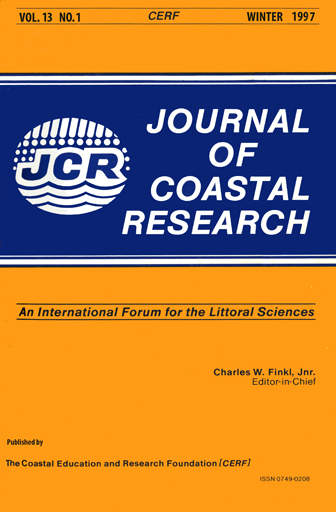Reproducibility of Sieve and Settling Tube Textural Determinations for Sand-sized Beach Sediment
Keywords:
Mean grain size, skewness, sorting, depositional environments, sediment transportAbstract
Using 525 beach sediment samples, the reproducibility of sieve and settling tube textural determinations is examined, in order to assess the suitability of both methods for determining parameters for use in environment of deposition or sediment transport models. Agreement between classifications of settling tube and sieve determinations of textural parameters is poor, with 37%, 44% and 77% of replicates having different mean grain size, sorting and skewness classifications respectively. The mass of the sediment sub-sample used affects textural parameters derived by both settling tube and sieve analyses. Mean grain size determined by settling tube increases with increasing sub-sample mass, whereas the mean grain size derived by sieving shows no trend. Sorting deteriorates (more poorly sorted) with increasing sub-sample mass for settling tube analyses, but improves slightly (better sorted) for sieve analyses. Skewness tends to become more finely skewed with increasing sub-sample mass for sub-sample masses less than 50 g, for both methods. The variability of settling tube results is least for sub-sample masses of 20-30 g. These results indicate that settling tube textural parameters must be used with caution in any environmental or transport numerical model based on sediment textural characteristics, at least for beach sands of the type used here. In particular, settling tube determined textural parameters cannot be directly substituted into a model derived from sieve analyses. Models based solely on specific numeric ranges of 1 or 2 textural parameters should be avoided. Models based on trends are more likely to result in reproducible interpretations.


